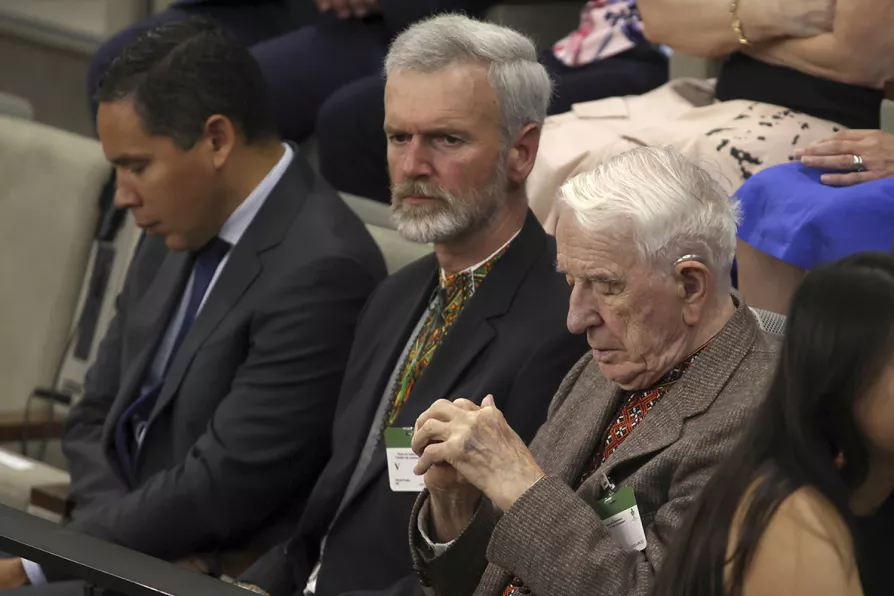Once the bustling heart of Christian pilgrimage, Bethlehem now faces shuttered hotels, empty streets and a shrinking Christian community, while Israel’s assault on Gaza and the tightening grip of occupation destroy hopes of peace at the birthplace of Christ, writes Father GEOFF BOTTOMS
Who is Yaroslav Hunka? – A sordid cold war story
The Waffen SS Galicia Division veteran whose celebration in the Canadian parliament has caused outrage entered Canada by way of Northamptonshire, where he lived after the war, avoiding any semblance of justice. KENNY COYLE investigates

 Yaroslav Hunka (right) waits for the arrival of Ukrainian President Volodymyr Zelenskyy in the House of Commons in Ottawa, Onatario, September 22, 2023
Yaroslav Hunka (right) waits for the arrival of Ukrainian President Volodymyr Zelenskyy in the House of Commons in Ottawa, Onatario, September 22, 2023
IF THE standing ovation in the Canadian House of Commons to 98-year-old Yaroslav Hunka, a former Ukrainian Nazi fighter, has come as shock to some, it’s because they simply weren’t paying enough attention.
You are a “Ukrainian hero,” the now disgraced former Canadian speaker of the house Anthony Rota told Hunka, to rapturous applause.
Prime Minister Justin Trudeau, admittedly no intellectual heavyweight, and his ministers feigned ignorance of Hunka’s wartime service for the Third Reich in the 14th Galicia Division of the Waffen SS, despite Rota’s clear introduction of the Ukrainian as a fighter against the Russians during the second world war.











